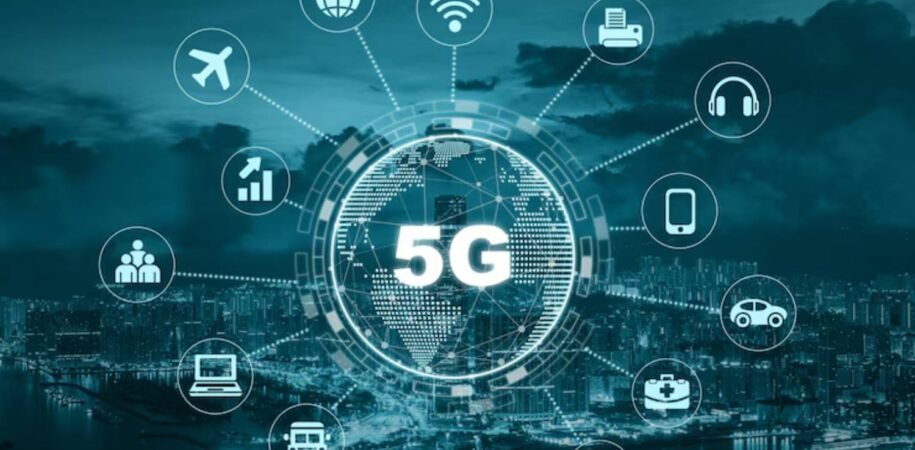The advent of 5G technology marks a significant leap in the evolution of wireless communication. As the fifth generation of mobile networks, 5G promises unprecedented speeds, ultra-low latency, and massive connectivity, setting the stage for transformative changes across various industries. From enhancing mobile broadband experiences to enabling the Internet of Things (IoT) and autonomous vehicles, 5G is poised to redefine the digital landscape.
Understanding 5G Technology
5G, or fifth-generation wireless technology, is designed to deliver faster data rates, reduced latency, energy savings, cost reductions, higher system capacity, and massive device connectivity. Unlike its predecessors, 5G operates on a broader spectrum, including low, mid, and high-frequency bands, to accommodate diverse applications.
Key Features of 5G
-
Enhanced Mobile Broadband (eMBB): Provides high-speed internet access, supporting applications like 4K/8K video streaming and virtual reality.
-
Ultra-Reliable Low-Latency Communications (URLLC): Enables real-time applications such as autonomous driving and remote surgeries.WIRED
-
Massive Machine-Type Communications (mMTC): Supports a vast number of IoT devices, facilitating smart cities and industrial automation.
Core Technologies Enabling 5G
Several advanced technologies underpin the capabilities of 5G:rfmwblog.com
-
Millimeter Waves (mmWave): Utilizes higher frequency bands (24 GHz and above) to achieve faster data rates.Wikipedia+15Search Engine Journal+15Digi International+15
-
Small Cells: Deploys low-power base stations to enhance coverage and capacity in densely populated areas.
-
Massive MIMO (Multiple Input Multiple Output): Employs multiple antennas to increase throughput and efficiency.
-
Beamforming: Directs signals to specific users, reducing interference and improving performance.
-
Network Slicing: Creates virtual networks tailored to specific applications or services

Applications and Use Cases
The versatility of 5G technology enables a wide array of applications:
1. Smart Cities
5G facilitates real-time data collection and analysis, optimizing traffic management, energy distribution, and public safety.Time+2Lifewire+2Investopedia+2
2. Healthcare
Enables remote patient monitoring, telemedicine, and even remote surgeries, enhancing healthcare accessibility and efficiency.
3. Autonomous Vehicles
Provides the low-latency communication necessary for vehicle-to-vehicle (V2V) and vehicle-to-infrastructure (V2I) interactions.
4. Industrial Automation
Supports real-time monitoring and control of manufacturing processes, leading to increased productivity and safety.
5. Entertainment and Media
Offers seamless streaming of high-definition content and immersive experiences through augmented and virtual reality.
Impact on SEO and Digital Marketing
The rollout of 5G technology significantly influences SEO strategies and digital marketing approaches:Search Engine Journal+4JEMSU+4New Design Group Inc.+4
1. Enhanced Mobile Experience
Faster load times and improved user experiences on mobile devices become critical, emphasizing the importance of mobile-first design.
2. Rich Media Content
With higher bandwidth, websites can incorporate more videos, interactive elements, and high-resolution images without compromising performance.Search Engine Journal
3. Voice Search Optimization
The increased use of voice assistants necessitates content optimized for voice search, focusing on natural language and long-tail keywords.Turain Software Pvt. Ltd.+2extrastrength.com.au+2Search Engine Journal+2
4. Local SEO
Improved geolocation accuracy enhances the relevance of local search results, making local SEO strategies more vital.Search Engine Journal
Challenges and Considerations
Despite its advantages, 5G technology presents certain challenges:
-
Infrastructure Requirements: Deploying 5G networks necessitates significant investment in infrastructure, including the installation of numerous small cells.
-
Security Concerns: The increased connectivity raises potential cybersecurity risks, requiring robust security measures.
-
Device Compatibility: Users need 5G-compatible devices to access the network, which may slow adoption rates.



